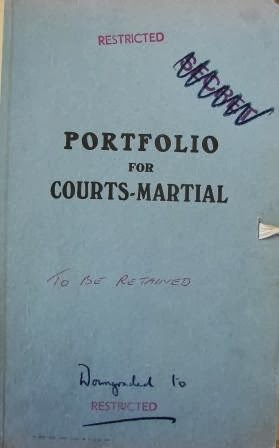There are many websites on the internet that make reference to Josef Jakobs. A plethora of sites feature the trivia question: Who was the last person executed in the Tower of London? In addition to the trivia sites, there are several that contain grossly inaccurate information (reviews in progress). There are also several that present relatively accurate, and in some cases, well researched information. One of these latter sites is that of Stephen Stratford [N.B. 2021 – Stephen’s site is no longer online. The following link is to a historical snapshot of the Josef Jakobs page on Stephen’s old site via the WayBack Machine].
It is very clear that Stratford has viewed Jakobs’ Court Martial file as well as his letter of petition to the King, both held at the National Archives in Kew.
While most of the Jakobs information presented on Stratford’s site is accurate, there are some minor factual errors and typographical mistakes in the summaries of the witness statements.

There is one piece of information provided on Stratford’s site that has proven difficult to corroborate. Towards the end of the section on Jakobs, it says:
Later that day, a post-mortem was performed by Bernard Spilsbury. One shot had hit Jakobs in the head, the other seven had been around the target area. An inquest held that afternoon decided that Jakobs had died of “Injuries to the heart caused by the passage of bullets”, and the inquest verdict was “Execution of judicial sentence of death in accordance with military law”.
To date, I have been unable to discover the original source of the statement that “one shot had hit Jakobs in the head”. Stratford’s pages on Jakobs do not cite references for any of the information. If the statement on Jakobs’ execution is accurate, one naturally wonders, did one soldier’s shot go wildly awry or was the shot to the head administered by the officer of the firing squad to finish the job.
A macabre thought.

A source for claiming that Jakob’s body had a gunshot wound to the head, as well as several to the head, is a book published in England in 1952, viz. “Bernard Spilsbury. His Life and Times” by D Browne and E Tullett.
Spilsbury was a renowned pathologist who gave evidence for the prosecution in many high profile cases from about 1910 until his own death by suicide in 1947.
There is a brief comment in the book mentioning several post-mortem examinations in 1941, including an unnamed German spy shot at the Tower. It is stated here that the body of the executed spy had (?) gunshot wounds to the chest and one to the head.
As for suggestions that a coup de grace was administered. then without wishing to be too morbid, I observe that a .303 inch (7.7mm) high velocity rifle bullet fired into the closed vault of a skull at very close range would inflict terribly disfiguring wounds, explosive in character, very disturbing to see. A low velocity pistol round (perhaps the .380 Enfield round used by the standard issue British military revolver) would not inflict such catastrophic destruction.
Thanks for the comment Glyn! Yes, I actually did come across an eye-witness account which notes that the officer in charge did apply a coup de grace with his pistol/revolver. Whether it was necessary (i.e. there were still signs of life), or just standard procedure, is another question.
Thanks again!